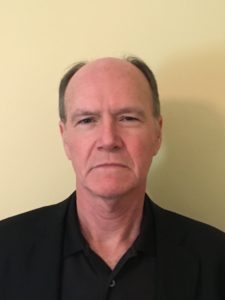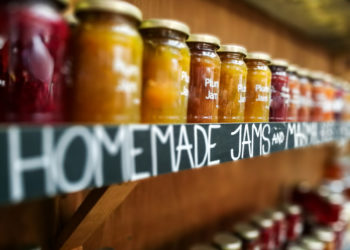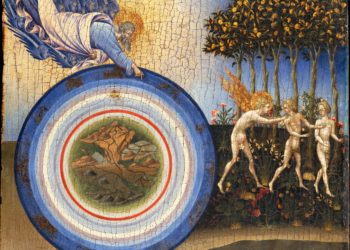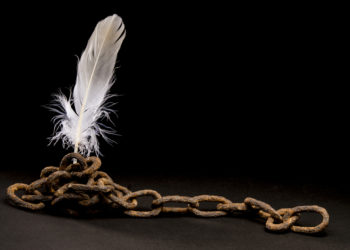Craig Van Dyck is Executive Director of CLOCKSS, the digital preservation service. This week, CLOCKSS has announced a new Succession Plan. As part of the Kitchen’s coverage of preservation for scholarly publishing, I was pleased to have the chance to interview Craig about CLOCKSS, the new Succession Plan that it announced yesterday, and related issues about digital preservation.

Preservation is an essential imperative for academia and society. Give us a little bit of background about CLOCKSS. What is its mission? What is its business model?
CLOCKSS’s mission is to preserve the digital scholarly literature for the long-term, to ensure that scholars will continue to have access to the high-value resources that they rely upon to conduct their research, even if that digital content should no longer be available from a publisher. CLOCKSS is a charitable, not-for-profit 501(c)(3) organization, governed by a Board comprised equally by libraries and publishers.We receive funding from publishers who pay an annual fee to participate in CLOCKSS, plus a per-article or per-book transaction fee; and from libraries who make contributions from their deep sense of commitment for the stewardship of scholarly resources on behalf of their communities. Whenever CLOCKSS “triggers” content for access (because the content would otherwise no longer be available online), we make it Open Access, so no one actually needs to pay us for the right to access the triggered content. The CLOCKSS business model is for the community stakeholders themselves to support the funding and sustainability of the archive.
One important way to establish trust in preservation services has been through the certification and audit process run by the Center for Research Libraries. Can you share a little bit about that experience for CLOCKSS and some of the outcomes of the process?
We received our original Trusted Repository Audit Checklist (TRAC) certification in 2014, from the Center for Research Libraries. It was a very thorough process, which is a polite way of saying time-consuming! But well worthwhile, as the process ensures that the preservation organization has very good documentation. We were pleased to receive the top rating for Technologies, Technical Infrastructure, Security, which I think is a recognition of the value of the LOCKSS software that we use.
One outcome of the TRAC certification process was to strengthen our succession planning. Monday’s press release announced the result, which is a quite robust plan. The CLOCKSS Board created a Trustee Committee, which is responsible for the creation, maintenance, and potential implementation of the succession plan. We are thankful that four highly respected universities (Stanford, Edinburgh, Alberta, and Humboldt) have stepped forward to comprise our succession plan. These four universities are purposely located in four different countries, to preserve the distributed international structure of the CLOCKSS system. In the coming days we will announce the outcome of our first recertification process with CRL, which had a positive result.

What is a Succession Plan? Why is it important?
CLOCKSS is in the business of ensuring access to content over the very long term, like forever. As a preservation organization, we feel that it is our responsibility to have a kind of business continuity plan, so that if CLOCKSS were to cease to exist in the decades or centuries to come, the content would continue to be preserved. We feel that universities are an excellent partner, given that universities are often longer-lived than corporations or even nations; and of course universities are at the center of the scholarly enterprise.
How is CLOCKSS choosing to implement a Succession Plan?
The four Successor universities have signed an Agreement with CLOCKSS, that defines the general outline of a handover. The members of the Trustee Committee of the Board are responsible to oversee that the handover occurs according to the terms of the Agreement. It is of course not foreseeable what the conditions will be, if and when that day arrives. Before making the Succession Plan, the Trustee Committee spent months considering various scenarios in which the demise of CLOCKSS could occur — from financial, to organizational, to societal, to environmental, to technological. It was necessary to consider these scenarios, in order to inform what an appropriate Succession Plan should be.
That description really suggests just how many types of risks a trusted preservation service must control for. Are there other risks that we should be thinking about today?
Well, in the current environment, there seems to be a surprising level of doubt about the efficacy of “expertise”. I think we should all be concerned about whether scholarship will continue to be valued. I hope so! It certainly should be.
More broadly, what do you see as the current state of preservation? What will the future bring?
There is quite a vibrant and active community of preservationists, in the academy, in museums and national libraries, and in the technology world. There are many meetings where people discuss their common issues. It seems to me that this community is still sorting itself out, I mean, it is still early days for digital preservation.
One thing that each group seems to share is to fight for funding in an environment with competing priorities. In the case of the scholarly literature, I am proud that the community of libraries and publishers are “taking care of their own business”, by participating in and funding robust preservation solutions.
Scholarship is diversifying and becoming more dynamic, with new forms of communications such as “interactive scholarly works”, which present some special problems for preservation that various parties need to collaborate on to address.
Outside of the academy, there is a growing digitization of cultural artefacts, as in national and ethnic heritage, which is important in all countries. One example that I am personally aware of is in Dallas, where an age-old Mexican-American neighborhood in Oak Cliff is being gentrified, and the Dallas Mexican American Historical League is collecting and digitizing objects and records, to ensure that this neighborhood’s story is not lost. Such digitization could present a significant preservation challenge in terms of scale and also in terms of who takes responsibility.


